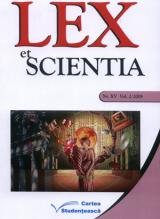ENTROPY IN ECONOMICS: ITS MEASUREMENT THROUGH PRIMARY DATA AND ITS USEFULNESS IN BUSINESS
ENTROPY IN ECONOMICS: ITS MEASUREMENT THROUGH PRIMARY DATA AND ITS USEFULNESS IN BUSINESS
Author(s): Elias SanidasSubject(s): Economy
Published by: Universitatea Nicolae Titulescu
Keywords: entropy; waste; measurement; firms
Summary/Abstract: Since Georgescu-Roegen’s (“The entropy law and the economic process”, 1971) pioneering work on entropy in economics, not many scholars have preoccupied themselves with this concept and its consequences. Recently some revival is taking place to link entropy and the business world (see for example “The entropy vector, connecting science and business” by Handscombe and Patterson, 2004). Briefly entropy is the degree of disorder at some time for any system. For a closed system the natural tendency would be for entropy to keep increasing till final destruction. In the business world, entropy is also present and unless some actions are taken, any business will become more and more ineffective and eventually die. Sanidas (“The open system of four dynamic bio-socio-economic processes of the firm: the diamond of the black box”, 2006) has introduced four processes (“processes of the black box, or PROBB) that are negentropic, in other words they can prevent entropy from increasing during all operations of a firm. Based on Sanidas’s work a questionnaire has been constructed and a survey was conducted with 120 firms in the marine industry in Australia. In this paper part of the results of this survey is presented with the aim to measure entropy in business. Thus, variables that denote waste directly or indirectly are some of the variables to correlate with all variables in the PROBB and inspect which such correlations are the strongest. The examination of these correlations together with some other analyses is providing us with some encouraging results as to the measurement of entropy. In turn such measurement will enable us to establish which areas are primary sources of inefficiencies. Obviously, the detection of these inefficiencies is necessary for firms to become more competitive and robust in their commercial and production activities.
Journal: LESIJ - Lex ET Scientia International Journal
- Issue Year: XV/2008
- Issue No: 2
- Page Range: 44-59
- Page Count: 16
- Language: English

